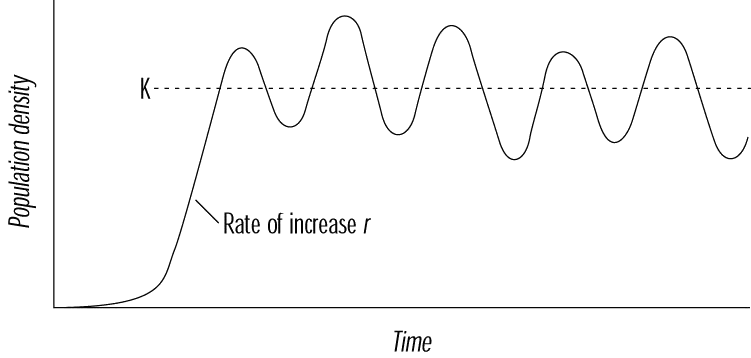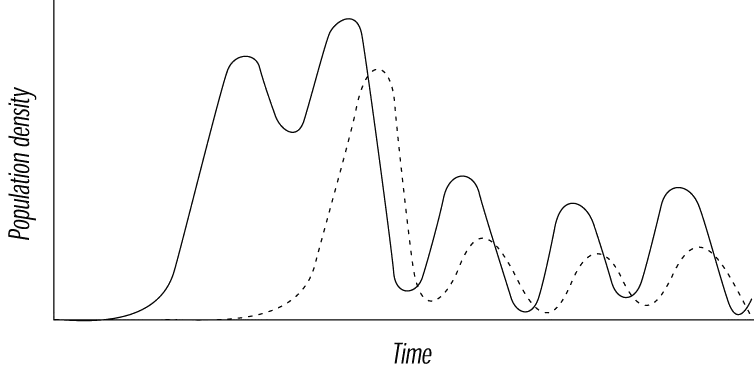When a species is introduced into an environment in which food and
space are abundant, the population increases exponentially at the
intrinsic rate of increase, r, characteristic of the species under
the particular environmental conditions of temperature, moisture, food
quality, etc. (See Figure 1). If conditions remain favourable for long enough,
resources become limiting at high densities. Population growth then slows
through density-dependent intra-specific competition as the carrying
capacity of the environment, K, under the particular environmental conditions is approached or exceeded (See
Figure 1). The population may stabilise at, or fluctuate about, the carrying capacity
(See Figure 1).
Change in population density of an organism after
introduction into an environment with a mean carrying capacity of K.

The discussion of r and K assumed stable environmental conditions, but major seasonal changes in conditions and shorter term weather influences may also be significant. As abiotic components of the environment become less favourable they limit development of all individuals in the population, and thus reduce
r, whether the density is high or low (i.e. density-independent limitation). The population may decrease until favourable conditions return and the population again increases. Seasonal changes and weather influences may also affect biotic components of the environment, such as food, parasites and predators, so altering the carrying capacity of the environment
(K) and inducing density-dependent limitation. Populations increase and decrease through time because of environmental changes. Both density-dependent and density-independent regulation affect most populations, but they may act at different times and in different places.
If biological control of weeds is to be successful, the biological
control agent must build up to densities that significantly affect the
host, and the herbivore and the host then become locked into a mutual
density-dependent relationship (See Figure 2). If the host density increases,
the herbivore population will rapidly increase in the presence of excess
food to eventually reduce the density of its host. When the host density
is low, the herbivore experiences local food shortage resulting in a
decrease in population growth rate, and most dispersing individuals will
die without finding another host plant. Considering the relationship from
the other point of view, if the herbivore density is low, the host plant
population will increase. If herbivore density is high, the host plant
density will decrease through attack by the herbivore. This alternate
cycling of herbivore and host densities usually occurs at different times
in different places across the distribution of the plant resulting in an
overall density of the host plant much less than would exist if the
herbivore was not present.
Change in population density of a weed
(solid line) after introduction to a new environment, and a successful
biological control agent (dashed line) after its release.

[ Back ] [ Next ]
Graham White

